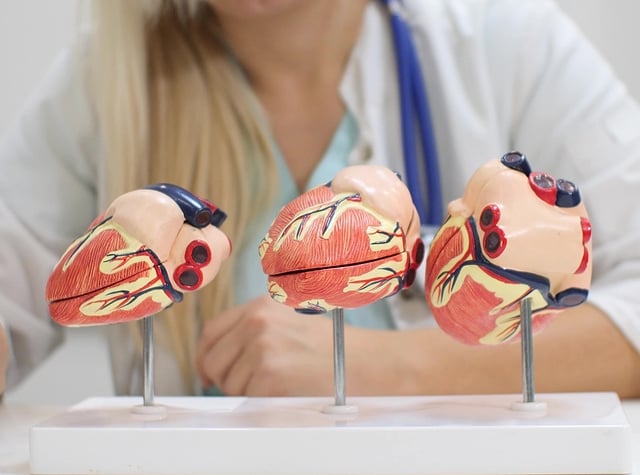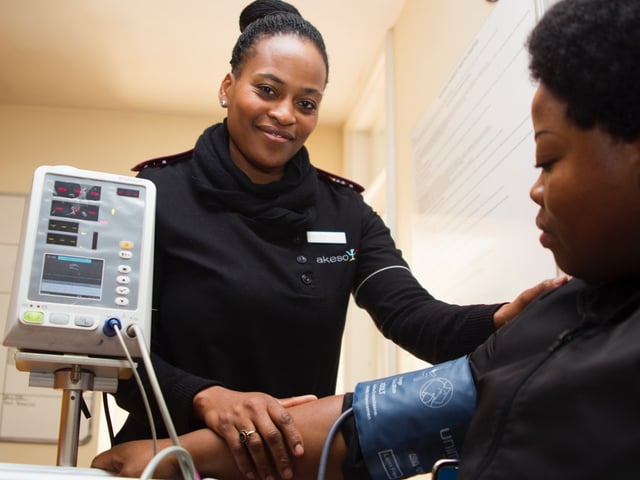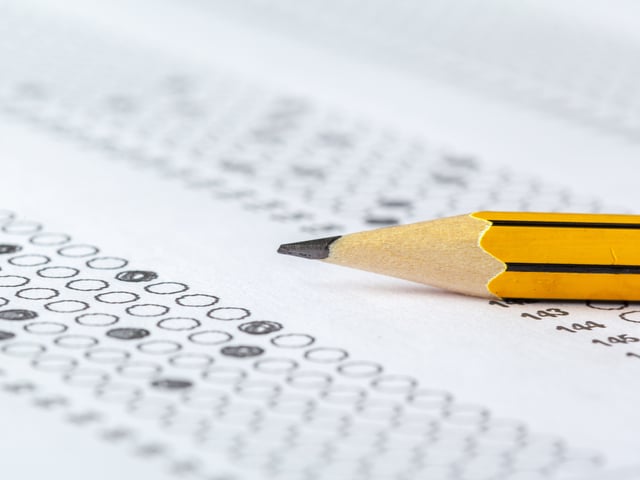
HESI Anatomy and Physiology Review: A Comprehensive Guide
As you prepare for the Health Education Systems, Inc (HESI) Admission Assessment (A2) Exam, the breadth of knowledge required can seem daunting. Among the most critical sections to master is Anatomy and Physiology. This guide will help you understand what to expect in this section, review essential concepts, and highlight the benefits of using Anatomy and Physiology practice tests, available on our website, to enhance your preparation.
What’s on the HESI Exam?
The Anatomy and Physiology section is one of eight sections on the HESI exam. They include:
-
Anatomy and Physiology: This section evaluates a student’s understanding of the structure and function of the human body. Questions may cover topics such as the skeletal, muscular, cardiovascular, respiratory, nervous, digestive, urinary, and reproductive systems. It tests knowledge of organ systems, anatomical terminology, physiological processes, and how they relate to health and illness.
-
Biology: The biology section assesses general biology concepts, including cellular biology, genetics, microbiology, evolution, ecology, and human biology. Questions may focus on cell structure, DNA and RNA, cellular processes, inheritance patterns, ecological relationships, and human biological systems.
-
Chemistry: This section covers fundamental principles of chemistry, including atomic structure, chemical bonds, chemical reactions, acids and bases, stoichiometry, and properties of matter. Questions may require knowledge of chemical formulas, equations, balancing equations, periodic table trends, and basic concepts in organic and inorganic chemistry.
-
Grammar: The grammar section tests language proficiency and understanding of English grammar rules. It assesses skills such as sentence structure, verb tenses, subject-verb agreement, pronoun usage, punctuation, capitalization, and word usage. Questions may involve identifying grammatical errors, improving sentence clarity, or selecting the most appropriate sentence or phrase.
-
Mathematics: The math section evaluates basic mathematical skills necessary for nursing practice. It includes topics like arithmetic, algebra, fractions, decimals, percentages, ratios, proportions, conversions, measurements, and basic statistical concepts. Questions may involve dosage calculations, medication administration, interpreting graphs, and problem-solving using mathematical principles.
-
Physics: While not always required, some schools include a physics section. This portion covers basic physics principles such as motion, forces, energy, electricity, magnetism, waves, and light. Questions may involve applying formulas, understanding the relationships between variables, interpreting graphs, and solving physics-related problems.
-
Reading Comprehension: This section measures a student’s ability to understand and analyze written passages related to healthcare topics. Questions may assess comprehension, main idea identification, inference-making, vocabulary in context, and drawing conclusions from the given text.
-
Vocabulary: The vocabulary section evaluates a student’s knowledge of healthcare-related terms and their meanings. It may include medical terminology, scientific terms, and words commonly used in healthcare contexts. Questions may ask students to define or choose the most appropriate term or phrase in specific contexts.
It’s important to note that the specific content and emphasis of each topic on the HESI can vary between schools and programs. Some institutions may choose to include additional sections or modify the weightage of different subjects based on their curriculum and priorities.
It’s recommended to refer to the official resources provided by your nursing school or the institution administering the exam for the most accurate and up-to-date information on the HESI exam content you will encounter.
What’s on the Anatomy and Physiology Section of the HESI Exam?
The Anatomy and Physiology section of the HESI exam focuses on the structure of the human body and how it functions. It tests the understanding of basic body systems, their parts, and how they work together to support life. This section typically contains approximately 25 questions, but the number can vary. Many students report that this section is one of the most difficult on the test, so it’s critical that you devote adequate time to learning the material. At minimum, you should have an understanding of the following concepts:
Musculoskeletal System
Bone and Muscle Tissue
This sub-section involves questions related to the fundamental building blocks of the musculoskeletal system – the bone and muscle tissues. Bone tissue topics encompass different types of bones (long, short, flat, irregular), bone cells (osteocytes, osteoblasts, osteoclasts), and the bone matrix. Muscle tissue topics involve a thorough understanding of skeletal, cardiac, and smooth muscles, their unique characteristics, and their primary roles.
Skeletal Structure
The skeletal structure topic focuses on the human skeleton, which is divided into the axial and appendicular skeleton. The axial skeleton includes the skull, vertebral column, and thoracic cage. The appendicular skeleton includes the pectoral girdles, upper limbs, pelvic girdle, and lower limbs. Understanding the names, locations, and basic functions of the major bones is crucial.
Joint Types and Functions
This part focuses on the different types of joints found in the human body – fibrous, cartilaginous, and synovial joints. It’s essential to understand how these joints work, their locations, and their roles in facilitating body movement.
Disorders Related to the Musculoskeletal System
This portion involves understanding common musculoskeletal disorders, including osteoporosis, arthritis, muscle dystrophy, fractures, and sprains. Students should be familiar with the causes, symptoms, and basic treatment options for these disorders.
Nervous System
Neuron Structure
The neuron structure topic involves understanding the basic unit of the nervous system, the neuron. Students must know the components of a neuron, which includes the cell body (soma), dendrites, and axon, and their roles in transmitting nerve signals.
Neural Transmission
Neural transmission topics involve understanding the process of how nerve impulses are transmitted from one neuron to another and how this enables communication within the nervous system. This includes an understanding of resting potential, action potential, the role of ion channels, neurotransmitters, and synapses.
Parts of the Brain and Their Functions
This part of the section focuses on the major parts of the brain – the cerebrum, cerebellum, and brainstem. Each of these parts is further divided into structures that have specific functions. For example, the cerebrum includes the frontal lobe, parietal lobe, occipital lobe, and temporal lobe. Understanding the main functions associated with these brain parts is key.
Reflexes
Reflexes topic includes the understanding of reflex arcs, their components (receptor, sensory neuron, integration center, motor neuron, and effector), and types of reflexes, such as the patellar reflex.
Common Neurological Disorders
This portion covers common neurological disorders such as Alzheimer’s disease, Parkinson’s disease, multiple sclerosis, stroke, and epilepsy. A basic understanding of the causes, symptoms, and treatment options for these disorders is necessary.
Circulatory System
Structure and Function of the Heart
The heart is the pumping organ of the circulatory system, and students are expected to understand its detailed structure. This includes the four chambers (right atrium, right ventricle, left atrium, left ventricle), the valves (tricuspid, mitral, pulmonary, aortic), and the major blood vessels (aorta, pulmonary arteries, pulmonary veins, superior and inferior vena cava). The function of these structures in maintaining the flow of blood throughout the body is a critical point of understanding.
Blood Vessels
Blood vessels are the pathways through which blood travels in the body. Students need to understand the three types of blood vessels: arteries (carry blood away from the heart), veins (carry blood to the heart), and capillaries (connect arteries and veins and facilitate the exchange of oxygen, carbon dioxide, nutrients, and waste between blood and tissues).
Blood Composition
Blood is composed of plasma and formed elements (erythrocytes, leukocytes, and platelets). Plasma is the liquid component of blood and carries nutrients, hormones, and waste products. Erythrocytes (red blood cells) carry oxygen, leukocytes (white blood cells) are involved in immune responses, and platelets play a crucial role in blood clotting. Understanding the roles of these components is vital.
Blood Flow Through the Body
This topic requires understanding of the double circulatory system, which involves the pulmonary and systemic circulations. Pulmonary circulation is the pathway through which deoxygenated blood travels from the heart to the lungs and returns as oxygenated blood. Systemic circulation is the pathway through which oxygenated blood travels from the heart to the rest of the body and returns as deoxygenated blood.
Common Cardiovascular Disorders
Common cardiovascular disorders include hypertension (high blood pressure), coronary artery disease, heart failure, arrhythmias, and stroke. Students are expected to understand the causes, symptoms, and basic treatments for these disorders.
Respiratory System
Anatomy and Physiology of the Respiratory Tract
This includes understanding the primary structures involved in breathing, such as the nose, pharynx, larynx, trachea, bronchi, bronchioles, and lungs (including alveoli). These structures work together to facilitate the flow of air into and out of the body.
Mechanics of Breathing
The mechanics of breathing involve the processes of inhalation and exhalation, which are driven by pressure differences between the lungs and the atmosphere. During inhalation, the diaphragm and intercostal muscles contract, increasing the volume of the thoracic cavity and reducing the pressure, allowing air to flow into the lungs. During exhalation, these muscles relax, decreasing the volume and increasing the pressure, forcing air out of the lungs.
Gas Exchange
Gas exchange involves the diffusion of oxygen and carbon dioxide between the air in the alveoli and the blood in the capillaries. Oxygen diffuses from the alveoli into the blood, and carbon dioxide diffuses from the blood into the alveoli to be exhaled. This process is driven by differences in partial pressures of these gases.
Common Respiratory Diseases
Common respiratory diseases include asthma, chronic obstructive pulmonary disease (COPD), pneumonia, tuberculosis, and lung cancer.
Digestive System
Structure and Function of the Digestive Tract
The digestive tract is a series of hollow organs joined in a long, twisting tube from the mouth to the anus. The organs that make up the digestive tract are the mouth, esophagus, stomach, small intestine, and large intestine. Each organ plays a specific role in the digestion and absorption of nutrients. Students are expected to understand the processes that occur in each part of the tract, including ingestion, digestion (both mechanical and chemical), absorption, and defecation.
Liver and Pancreas
The liver and pancreas, while not part of the digestive tract, are crucial for digestion. The liver produces bile, which helps break down fats, while the pancreas produces pancreatic juice, which contains enzymes that help digest proteins, fats, and carbohydrates.
Common Digestive Disorders
Students must be familiar with common digestive disorders, including gastroesophageal reflux disease (GERD), peptic ulcers, gallstones, celiac disease, Crohn’s disease, and irritable bowel syndrome (IBS). This involves understanding the symptoms, causes, and general treatment approaches for these conditions.
Urinary System
Kidneys and Bladder
The urinary system is made up of the kidneys, ureters, bladder, and urethra. The kidneys filter blood to remove waste products and produce urine. The urine then travels down the ureters to the bladder, where it’s stored until it can be excreted through the urethra. Understanding the anatomy of these organs and their role in the urinary system is key.
Filtration and Excretion Processes
The kidneys filter the blood in a multi-step process that includes glomerular filtration, tubular reabsorption, and tubular secretion. These processes result in the production of urine, which contains waste products like urea and creatinine, and the reabsorption of necessary substances like water, glucose, and electrolytes back into the blood.
Acid-Base Balance and Fluid Balance
The kidneys play a crucial role in maintaining the body’s acid-base balance by excreting hydrogen ions and reabsorbing bicarbonate ions. They also help maintain the body’s fluid balance by adjusting the volume of water lost in urine. They do this in response to hormones such as antidiuretic hormone (ADH) and aldosterone.
Disorders of the Urinary System
Common disorders of the urinary system include kidney stones, urinary tract infections (UTIs), bladder control problems (incontinence), and chronic kidney disease. Students should be aware of the causes, symptoms, and basic treatments for these conditions.
Integumentary System
Skin Layers
The skin is made up of three layers: the epidermis, dermis, and hypodermis. The epidermis, the outermost layer, primarily consists of keratinocytes and is responsible for the skin’s barrier function. The dermis, located beneath the epidermis, is made up of connective tissue and houses blood vessels, nerves, sweat glands, and hair follicles. The hypodermis, the deepest layer, contains adipose tissue and provides insulation and cushioning for the body.
Functions of the Skin
The skin has several critical functions, including protection (against microorganisms, dehydration, ultraviolet radiation), sensation (touch, temperature, pressure, pain), thermoregulation (through sweat and changes in blood flow), and vitamin D synthesis (via sunlight exposure).
Hair, Nails, Sweat, and Sebaceous Glands
Hair provides protection and sensory input. Nails protect the tips of fingers and toes and can provide clues to a person’s overall health. Sweat glands help regulate body temperature through the production of sweat, which cools the body as it evaporates. Sebaceous glands produce sebum, an oily substance that helps keep the skin and hair moisturized.
Common Integumentary Disorders
Common integumentary disorders include acne, dermatitis, psoriasis, skin cancer, and burns. Understanding the causes, symptoms, and general treatment approaches for these conditions is crucial.
Endocrine System
Hormone-Producing Glands and Hormones
The endocrine system consists of several glands, including the pituitary, thyroid, parathyroid, adrenal glands, pancreas, and gonads (testes in males, ovaries in females). Each gland produces specific hormones that have effects on various target tissues and organs. For example, the thyroid gland produces thyroid hormone, which regulates metabolism.
Hormone Function
Hormones are chemical messengers that travel through the bloodstream to reach their target tissues. They have a broad range of functions, including regulating metabolism, growth and development, tissue function, reproduction, sleep, and mood.
Homeostasis and Feedback Mechanisms
The endocrine system plays a critical role in maintaining homeostasis - the body’s stable internal environment. This is achieved through feedback mechanisms. For instance, when blood sugar levels rise, the pancreas secretes insulin, which promotes glucose uptake by cells, lowering blood sugar. When levels are low, the pancreas releases glucagon, raising blood sugar. This is an example of a negative feedback mechanism.
Common Endocrine Disorders
Common endocrine disorders include diabetes mellitus (type 1 and type 2), hyperthyroidism, hypothyroidism, Addison’s disease, Cushing’s syndrome, and polycystic ovary syndrome (PCOS). Understanding the causes, symptoms, and treatment approaches for these conditions is essential.
Reproductive System
Male Reproductive System
The male reproductive system consists of organs that produce, transport, and deliver sperm. Key structures include:
-
Testes: The testes are the site of sperm and testosterone production.
-
Epididymis: This is a long, coiled tube where sperm mature and are stored.
-
Vas Deferens: This duct transports mature sperm to the urethra.
-
Seminal Vesicles, Prostate, and Bulbourethral Glands: These structures produce seminal fluid, which nourishes and helps transport sperm.
-
Penis: The penis delivers sperm into the female reproductive tract.
Female Reproductive System
The female reproductive system includes structures involved in producing eggs, providing a site for fertilization and fetal development, giving birth, and producing female sex hormones. Key structures include:
-
Ovaries: The ovaries produce eggs (ova) and female sex hormones (estrogen and progesterone).
-
Fallopian Tubes: These tubes transport the ova from the ovaries to the uterus. Fertilization typically occurs here.
-
Uterus: The uterus is the site of fetal development.
-
Cervix: The cervix is the lower part of the uterus that connects to the vagina. It allows for the passage of menstrual flow and dilation during childbirth.
-
Vagina: The vagina serves as the birth canal and the conduit for menstrual flow from the body. It also plays a role in sexual intercourse.
Common Reproductive Disorders
Understanding the common reproductive disorders is also part of this section. For the male reproductive system, these may include erectile dysfunction, prostate cancer, testicular cancer, and benign prostatic hyperplasia. For the female reproductive system, common disorders include polycystic ovary syndrome (PCOS), endometriosis, uterine fibroids, and various forms of gynecologic cancer (such as cervical, ovarian, and uterine cancer). Understanding the causes, symptoms, and general treatment approaches for these conditions is essential to doing well on the Anatomy and Physiology section of the HESI exam.
Essential Strategies for Success on the HESI A2 Exam
Now, let’s explore some essential strategies that can significantly contribute to your success on the HESI A2 exam. These strategies will not only help you effectively manage your study time but also enhance your understanding and retention of the complex material. By incorporating these techniques into your study routine, you can approach the exam with confidence and achieve optimal results.
Create a Study Plan
Divide your study material into manageable parts and dedicate time each day to different topics. Consider focusing on one or two systems per week. Remember to revisit previously studied topics periodically to reinforce your knowledge.
Engage in Active Learning
Active learning strategies, such as flashcards, diagrams, or teaching others, can help you retain complex information better. These methods promote understanding beyond memorization, critical for applying knowledge in a clinical setting.
Use Mnemonics
Mnemonics are a great tool for remembering complicated concepts. For example, the first letters of the words in the mnemonic, “On Old Olympus’ Towering Tops, A Finn And German Viewed Some Hops” can help students remember the order of the cranial nerves.
Visualize
A more visual means of study, such as utilizing coloring books, diagrams, or online practice tests and learning videos, offers numerous benefits. Visual aids provide a dynamic and interactive way to understand complex concepts in anatomy. Coloring books allow for hands-on engagement, helping to reinforce knowledge and improve retention. Diagrams and videos provide visual representations that enhance comprehension and make it easier to grasp intricate body structures and processes. Online practice tests and learning videos offer interactive resources that allow for self-assessment and the opportunity to reinforce understanding. Incorporating these visual tools into your study routine can greatly enhance your learning experience and improve your overall grasp of anatomical concepts.
Use the Power of Group Study
Studying in a group can be very effective. Explaining concepts to others helps consolidate your understanding, and learning from peers can introduce you to new study methods and perspectives.
Harness the Power of Practice Tests
It’s often said that practice makes perfect, and this rings true for HESI preparation. Taking practice tests, like those available on our website, not only solidifies your knowledge but also familiarizes you with the exam’s format and time constraints.
Get Ready to Pass the HESI Exam!
In conclusion, preparing for the Anatomy and Physiology section of the HESI A2 Exam requires a strategic study plan, an active learning approach, a good grasp of key concepts, and ample practice. With dedication and the right strategies, you are well on your way to acing this part of your exam and progressing on your path to becoming a nurse.
Keep Reading

Health Education Systems Incorporated Exam Blog
How to Pass the HESI Exam: A Comprehensive Guide to Acing Your Nursing Entrance Exam
If you’re considering becoming a nurse, the HESI exam can be a crucial …

Health Education Systems Incorporated Exam Blog
The Complete Guide to HESI Exam Scores
Are you ready to become a nurse? Many nursing schools require entrance …

Health Education Systems Incorporated Exam Blog
Is the HESI Exam Hard?
Did you know nursing is the largest healthcare profession in the U.S.? …